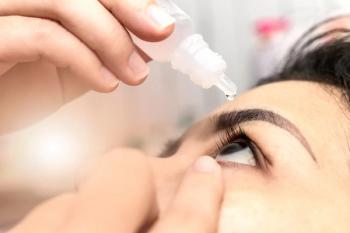
AAOpt 2025: This year and beyond in diabetes
A. Paul Chous, MA, OD, FAAO; and Jeffrey Gerson, OD, FAAO, provided comprehensive, up-to-date information on diabetes management, treatment strategies, and emerging medical technologies during their presentation "Diabetes Update: What’s New in 2025" during the American Academy of Optometry's (AAOpt) Academy 2025 meeting in Boston, Massachusetts. In an exclusive interview with Optometry Times, Chous provided an overview of what optometrists should keep their eye on going into 2026.
To see the rest of our AAOpt Academy coverage,
Transcript: Edited lightly for clarity and length.
Alongside Jeffrey Gerson, OD, FAAO, you presented the lecture "Diabetes Update: What’s New in 2025." For those who missed it, could you provide an overview?
This is with Jeff Gerson, my close friend and colleague. So this is, I think, our 19th year in a row presenting this specific talk at the Academy. So we're thrilled to go back every year; we've developed a following of doctors who like to hear some new information. So we covered things, including this walking study I'm doing to try to improve continuous glucose monitoring metrics and people who have diabetes, as well as those who have prediabetes. We also talked about how much weight somebody needs to lose on a population level to cause remission of type 2 diabetes. There are some new data about that out in the last year. So we're going to talk about different therapies for reducing weight, from bariatric surgery to the GLP-1 [glucagon-like peptide-1] drugs.... We have a new approval for sleep apnea, for instance. But also, there's been concern raised about the GLP-1 injectable drugs, worsening diabetic retinopathy, there's been an increased risk of wet [age-related macular degeneration, or] AMD showing up in at least 1 trial. And the other thing is nonarteritic anterior ischemic optic neuropathy rates are definitely higher than people who take these drugs. But we're going to look at not just relative risk, which is what the studies do that scare us all, but what the absolute risk is for patients developing one of these catastrophic complications. And they're actually quite low. That's the good news.... We're going to be talking about some new oral therapies that are on the horizon for treating diabetic retinopathy as well.
With the GLP-1s, that's been a hot topic. If an optometrist has a patient in their chair who is currently taking a GLP-1, is there anything particularly in terms of patient education or care for those patients that ODs should be keeping an eye on, in terms of diabetic retinopathy (DR)?
It's really the important question. So the first thing is, we know if your blood glucose drops rapidly and precipitously, so a drop of [hemoglobin] A1C of 2 points or more. So let's say from a 10 to an 8 in a relatively short period, under 6 months, those are the patients who are very likely to experience a worsening of their DR. If somebody has no retinopathy or mild retinopathy, and they get a little worse, that's not all that concerning, as it turns out. But if somebody is on the edge, let's say they have moderate [nonproliferative diabetic retinopathy, or] NPDR, you're trying to prevent them from developing a vision-threatening sequela, it's important to monitor those patients more closely. So what I'm telling my patients is, "There is an increased risk if your blood [glucose] drops rapidly, as measured by hemoglobin A1C or your glucose time and range. This is something that I want to keep a watch on. I'd like to see you back maybe sooner than I would have otherwise." And this is another place where ERG [electroretinogram], I think, comes into the fold to allow us to better stratify individual patient risk.... So if somebody has a history of AION [anterior ischemic optic neuropathy], you know, I'll tell them, "You may not want to go with a high-dose GLP-1 drug. I'm going to send a note to your PCP [primary care physician] or endocrinologist and just let them know." We know people who have AION in 1 eye are more likely to get it in the fellow eye. So those are patients I'm going to be more careful with. Luckily, those are a small minority of the patients we encounter.
So what can we expect in 2026? Is there anything from 2025 that we should also be excited about for next year?
So I'm excited about a trial that the Diabetic Retinopathy Clinical Research [DRCR] Network is going to have early data for in 2026, and that's using fenofibrate, this very cheap, commonly prescribed antilipid agent, and it's specifically used to lower triglycerides. So they're testing it now to see if it can prevent worsening of disease to proliferative diabetic retinopathy. It's already been shown in 1 study in Scotland to cut the rate of diabetic macular edema in half, but other studies have shown no benefit. So it's interesting. We'll see if the DRCR study, which is using a higher dose of the oral medication, works. If it does that, it'd be great, because routinely now, if I have patients with NPDR type 2 diabetes, they're not on a statin, because if you add fenofibrate to that mix, you increase the risk of rhabdomyolysis. But I'm talking to those patients and their PCPs about preventively prescribing low doses. Fenofibrate is used widely already in Australia, in everybody with adult type 2 diabetes, and so I think that's something that opens up another toolbox for those of us in primary eye care, for helping our patients not need injections or photocoagulation.
Newsletter
Want more insights like this? Subscribe to Optometry Times and get clinical pearls and practice tips delivered straight to your inbox.
















































.png)


